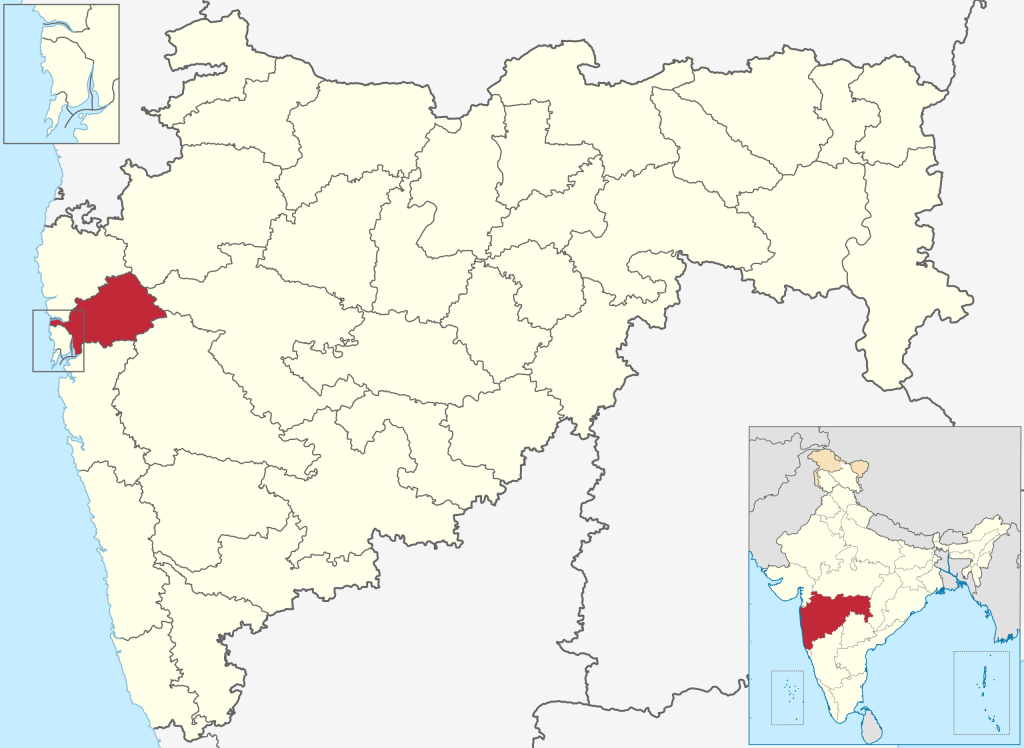Kisal Village Rural Plantation Initiative – Thane District
Project Overview
This impactful initiative by the Aadivasi Welfare Foundation (AWF) involves large-scale native tree plantation in Kisal village, Thane district, approximately 140 km from the Mumbai port. Designed to restore degraded land, generate rural employment, and deliver measurable environmental outcomes, the project is a part of the Mumbai Metropolitan Region’s largest rural afforestation drive in collaboration with the Rotary Club of Bombay.
The project’s primary goal is to plant 20,000 native trees during the 2025 monsoon, with a scaling target of 1 lakh trees in 2026. Each tree planted supports climate resilience, improves groundwater recharge, and creates livelihood opportunities for tribal and rural communities.
Rationale for the Project
Project Map

Thane District

✅ Cost-Effective Climate Action
Urban plantations in Mumbai cost over ₹500 per sapling due to high land and labour charges. At Kisal, the same quality plantation—including GPS tracking and maintenance—is achieved at just ₹200 per plant, allowing 2.5x more trees per rupee invested.
🌍 Environmental Sustainability
- Native tree plantation improves soil quality, reduces surface runoff, and recharges groundwater.
- Trees regulate the microclimate, reducing local temperature by 2–3°C and improving air quality in peripheral zones of Mumbai.
👩🌾 Tribal Livelihood Enhancement
- Over 200 rural families, especially women, are employed in sapling raising, pit digging, plantation, watering, and maintenance.
- The initiative prevents outward migration by providing steady seasonal income and upskilling opportunities.
🔬 Scientifically Backed
Research by Indian Institute of Science (IISc) and WRI India confirms that afforestation within 100–150 km of urban centres like Mumbai helps:
1. Combat urban heat island effect and pollution
2. Restore regional green cover
3. Recharge rivers and groundwater
4. Improve biodiversity
Selected Local Tree Species
Suitability Across Agro-Climatic Zones & Significance
Maharashtra is divided into five major agro-climatic zones:
- Konkan (Coastal)
- Western Maharashtra (Semi-Arid)
- Vidarbha (Hot and Dry)
- Marathwada (Drought-prone)
- Khandesh and Northern Maharashtra (Moderate rainfall)
1. Neem (Azadirachta indica)
- Regions: Grows well in all zones—especially Marathwada, Vidarbha, and Western Maharashtra.
- Significance:
- Highly drought-tolerant, thrives in poor soils.
- Known for its medicinal properties and natural pest-repellent qualities.
- Provides shade, improves soil fertility, and prevents erosion.
2. Jamun (Syzygium cumini)
- Regions: Suitable for Konkan, Khandesh, and parts of Vidarbha with moderate to high rainfall.
- Significance:
- Fruit-bearing tree; promotes livelihood generation through seasonal income.
- Important in biodiversity, supporting bees, birds, and pollinators.
- Helps improve air quality and contributes to urban greening.
3. Mango (Mangifera indica)
- Regions: Best suited for Konkan, Khandesh, and Western Maharashtra.
- Significance:
- Economically important fruit crop in Maharashtra.
- Long-lived, stabilizes soil and provides food security.
- Adds commercial value to afforestation drives.
4. Karanj (Pongamia pinnata)
- Regions: Highly adaptable; thrives in Marathwada, Vidarbha, and Western Maharashtra.
- Significance:
- Fast-growing, N-fixing tree, improves soil health.
- Seeds used for biofuel production.
- Important for revegetation of degraded lands.
5. Shisam (Dalbergia sissoo)
- Regions: Suitable for Vidarbha, Western Maharashtra, and Khandesh.
- Significance:
- High-value timber tree; fast-growing.
- Promotes income diversification for rural farmers.
- Grows well along riverbanks and in agroforestry systems.
6. Teak (Tectona grandis)
- Regions: Thrives in Konkan, Khandesh, Vidarbha, and parts of Western Maharashtra with decent rainfall.
- Significance:
- One of India’s top timber species.
- Durable, economically lucrative; encourages long-term carbon sequestration.
- Requires some care in early years, then grows well in open sun.
7. Mahua (Madhuca longifolia)
- Regions: Ideal for Vidarbha, Marathwada, and Tribal regions of North Maharashtra.
- Significance:
- Deeply interlinked with tribal livelihoods.
- Flowers used for food and beverages; seeds for oil.
- Very drought-resistant and good for reclaiming barren lands.
8. Semal (Bombax ceiba)
- Regions: Grows well in Konkan, Vidarbha, and riverine areas of Western Maharashtra.
- Significance:
- Provides fodder, timber, and habitat for birds.
- Deciduous tree; improves soil structure.
- Resilient and fast-growing.
9. Jackfruit (Artocarpus heterophyllus)
- Regions: Thrives in Konkan and parts of Khandesh with higher humidity.
- Significance:
- High-yield fruit tree, contributes to food security.
- Supports biodiversity and agroforestry systems.
- Valuable for community nutrition.
10. Ear-leaf Acacia (Acacia auriculiformis)
- Regions: Adaptable; grows in Marathwada, Vidarbha, and Western Maharashtra.
- Significance:
- Very resilient in dry, poor soils.
- Improves degraded land and prevents erosion.
- Used in fuelwood, fodder, and soil reclamation projects.
Key Features & Deliverables
- 📅 20,000 Trees (2025) | 🌧️ 1,00,000 Target (2026)
- 🔁 2-Year Maintenance Guarantee
- 🌱 Replantation of dead saplings in next monsoon at no extra cost
- 📍 GPS-Tracked Plantation with map-based verification
- 📑 Detailed Ecological Report within 2 months post-plantation
- ✅ Independent Audit Report after 12 months
- 💼 80G Certificate for CSR contributions
Proud Collaboration
Led by the Rotary Club of Bombay, this project is a flagship afforestation initiative under the UN Decade on Ecosystem Restoration, implemented by AWF with full community participation and scientific validation.
Join Us
This initiative demonstrates how data-driven environmental action can be scaled affordably for impact across rural India. We invite CSR leaders, institutions, and changemakers to partner with AWF and bring this model to other regions of Maharashtra and India.
📧 Email: info@awf.co.in
🌐 Website: www.awf.co.in
